Are you looking trying to find great high-growth ETFs across the vast number of ETF choices available to Canadians?
A general criterion for growth stocks is that they should try to double in price every five years, showcasing a growth rate of roughly 15% per year.
Keep in mind that great growth potential comes with a substantial amount of risk in the form of price volatility. This volatility can be especially high during difficult market periods and over the short term.
I will cover the best high-growth ETFs in Canada below and outline their key features.
Pros and Cons of High-Growth ETFs
As with all investments, high-growth ETFs shine during certain market conditions while underperforming during others.
- High rates of return during favourable market conditions
- Typically include companies involved in the latest, cutting-edge technologies
- Growth stocks typically pay little in dividends and offer investors returns through capital gains
- Value investing has outperformed over the very long term
- Lack of dividends may be unattractive for income-oriented investors
- Can be very volatile in the short-to-medium term
High-growth ETFs can be an excellent way to invest in growth companies through a diversified approach.
5 Best High-Growth ETFs in Canada
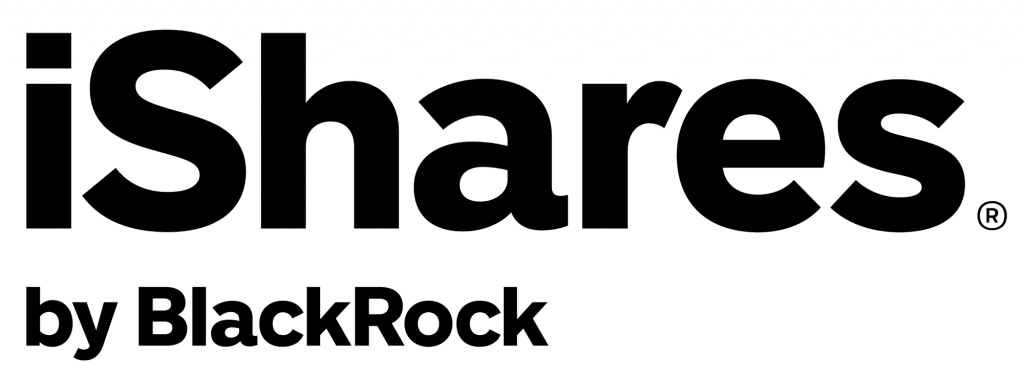
- Ticker: XCG.TO
- Inception Date: November 6, 2006
- Assets under Management: $69.1 Million
- Management Expense Ratio: 0.55%
- Management Style: Passive
- Risk Rating: Medium
- Distributions: Quarterly
- Distribution Yield: 1.84%
- Stock Price: $47.27
- YTD Return: 2.05%
Blackrock’s iShares offers a growth-focused ETF through its factor approach to investing. The ETF invests in Canadian companies that exhibit growth characteristics (as opposed to value). XCG passively tracks the Dow Jones Canada Select Growth Index.
XCG invests only in large and mid-sized Canadian stocks, meaning that it doesn’t contain US stocks or international equities.
The ETF has a very long performance track record and is fairly small in terms of assets under management. It pays a decent dividend yield to investors on a quarterly basis, considering that it focuses solely on Canadian growth stocks.
The iShares Canadian Growth ETF comes with fairly high fees relative to passive ETFs in general. When compared to other growth-factor ETFs in Canada, the fund’s MER is very inexpensive.
The XCG ETF is an excellent choice if you are looking to invest exclusively in Canadian growth companies.
2. CIBC Global Growth ETF
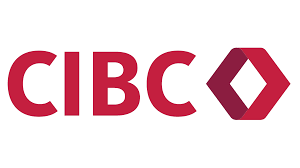
- Ticker: CGLO.TO
- Inception Date: July 27, 2020
- Assets under Management: $52.0 Million
- Management Expense Ratio: 0.96%
- Management Style: Active
- Risk Rating: Medium
- Distributions: Annually
- Distribution Yield: 0.14%
- Stock Price: $27.05
- YTD Return: 3.58%
CIBC offers a growth ETF with a global mandate, meaning that it invests all across the world without bias among countries, regions, and sectors. CGLO is an active strategy that follows the stock picking of the Renaissance Global Growth Fund (a mutual fund that is also managed by CIBC).
The ETF currently has high allocations across three sectors: information technology, health care, and consumer discretionary. Most of the equities within the portfolio have large market capitalizations and are classified as large-cap stocks.
The ETF has a very short performance track record and is also fairly small in terms of assets under management. It pays an almost non-existent dividend yield to investors on a quarterly basis, which is to be expected from a fund that focuses solely on growth companies.
CGLO is offered at a high management expense ratio relative to most ETFs as well as relative to growth-oriented Canadian ETF peers. A large contributor to the higher fees is the active management approach, which is designed to add value throughout various market cycles.
If you are looking to invest in growth companies globally (not just within Canada), CIBC’s CGLO ETF is a good option to consider adding to your portfolio.

- Ticker: XIT.TO
- Inception Date: March 19, 2001
- Assets under Management: $413.1 Million
- Management Expense Ratio: 0.61%
- Management Style: Passive
- Risk Rating: Medium-to-High
- Distributions: Semi-Annually
- Distribution Yield: 0%
- Stock Price: $53.37
- YTD Return: 6.27%
Another high-growth ETF to consider adding to your portfolio is the XIT ETF from iShares. Although XIT does not target growth companies explicitly, it only invests in Canadian technology companies, the vast majority of which are growth stocks.
The technology sector in Canada is fairly small (relative to the US) since the Canadian market is highly concentrated in sectors such as energy, materials, and financials. Due to this, the XIT ETF is highly concentrated among just a few names (it currently has under 30 underlying holdings).
The ETF has a very long performance track record and is massive in terms of assets under management. XIT pays distributions to investors on a semi-annual basis but currently has a distribution yield and a 12-month trailing yield of zero.
The iShares S&P/TSX Capped Information Technology Index ETF comes with high fees relative to passive ETFs in general. Relative to Canadian growth-factor ETFs, the fund’s MER is inexpensive.
If you would like to target Canadian technology companies with your high-growth investment approach, the XIT ETF is an excellent fund to consider adding to your portfolio.
4. CI Munro Global Growth Equity Fund
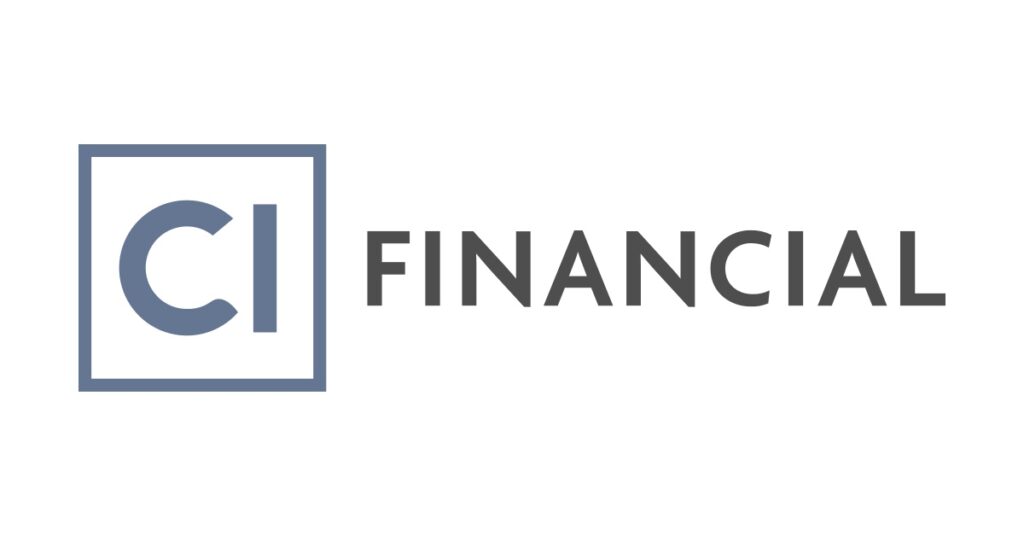
- Ticker: CMGG.TO
- Inception Date: January 7, 2021
- Assets under Management: $21.9 Million
- Management Expense Ratio: 1.19%
- Management Style: Active
- Risk Rating: Medium
- Distributions: Annually
- Distribution Yield: Not available
- Stock Price: $24.8
- YTD Return: 7.14%
CI Asset Management is one of the largest Canadian asset managers here at home. The company’s CI Munro Global Growth Equity Fund, previously only a mutual fund, is now available to Canadians as an ETF. The ETF invests in global growth stocks through a highly-concentrated approach.
Although the fund has a global investment mandate, over 70% of the fund is currently invested in US stocks. The ETF’s sector allocation is well diversified across information technology, health care, and financial services as top sectors.
The ETF has a very short performance track record and is tiny in terms of assets under management. CMGG pays distributions on an annual basis but does not publicly report any distribution yields for the fund.
CMGG comes with a very high management expense ratio relative to typical ETFs and relative to growth-oriented Canadian ETF peers. The active management approach and the skill of the portfolio managers behind the strategy are likely large factors behind the high investment costs of the mandate.
The CI Munro Global Growth Equity Fund is a good high-growth ETF to consider, backed by a strong portfolio management team. Be mindful that it is offered at a fairly steep MER.
5. Franklin Global Growth Active ETF

- Ticker: FGGE.TO
- Inception Date: October 6, 2020
- Assets under Management: $21.3 Million
- Management Expense Ratio: 1.01%
- Management Style: Active
- Risk Rating: Medium
- Distributions: Annually
- Distribution Yield: Not available
- Stock Price: $22.99
- YTD Return: -1.02%
Franklin Templeton is a US-based asset manager that typically focuses on value investing. Despite this, the company has expanded its investment shelf to include a wide variety of strategies, including growth mandates.
The Franklin Global Growth Active ETF is an actively-managed ETF that follows the investment strategy of the Franklin Global Growth mutual fund. It invests in stocks of growth companies of any market capitalization across the globe.
Similar to CMGG, more than 70% of the fund is invested in the US, despite being marketed as a global ETF. Key sector focuses of the strategy include information technology, health care, and industrials. The strategy is fairly concentrated, investing in approximately 35 underlying stock holdings.
The ETF has a very short performance track record but replicates the performance of the Franklin Global Growth mutual fund, which has a very long performance track record. The ETF is very small in terms of assets under management. FGGE pays annual distributions to investors but does not publicly disclose a specific distribution yield.
FGGE has a relatively high management expense ratio compared to typical ETFs as well as relative to growth-oriented Canadian ETFs. One of the main factors behind the higher fees is the fund’s active management approach.
The Franklin Global Growth Active ETF is a good fund to consider if you are looking for an actively-managed ETF that invests globally in high-growth companies (despite its higher fees).
Are High-Growth ETFs Worth the Fees?
If you do not have the time to individually research high-growth stocks to include in your investment portfolio, high-growth ETFs are a good option to consider.
Passively-managed strategies come with lower management fees but will return the performance of the underlying high-growth index. Due to the nature of high-growth stocks, underlying growth indices may perform poorly during periods of high market volatility.
Actively-managed strategies come with substantially higher fees but allow you to take advantage of a portfolio management team’s expertise in navigating market conditions.
It is very important to take a look at an ETF’s past performance, especially through difficult market environments, when determining if a fund’s active management is worth the additional fees.
How to Buy the Best High-Growth ETFs
The cheapest way to buy ETFs is from discount brokers. My top choices in Canada are:
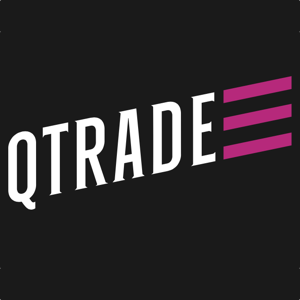
- 105 commission-free ETFs to buy and sell
- Excellent customer service
- Top-notch market research tools
- Easy-to-use and stable platform

- Stock and ETF buys and sells have $0 trading fees
- Desktop and mobile trading
- Reputable fintech company
- Fractional shares available
To learn more, check out my full breakdown of the best trading platforms in Canada.
Conclusion
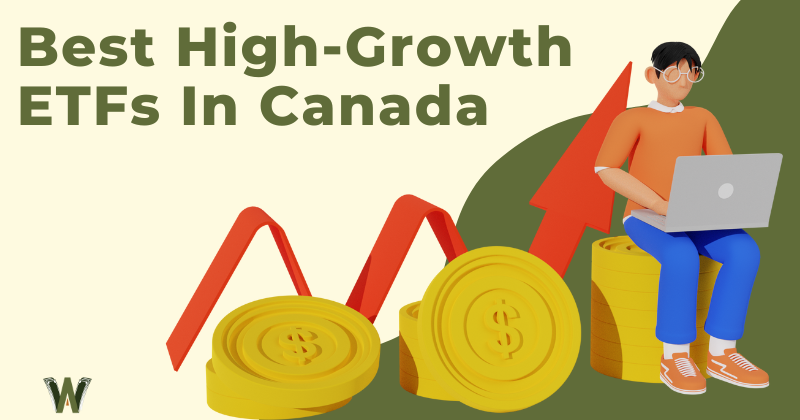
Before deciding on one or more high-growth ETFs, make sure to research your options to see if passive or active strategies make more sense in your particular case.
Active management may be able to help mitigate large price drops in an ETF but is usually offered at much higher MERs. Make sure to look at an ETF’s portfolio management team to determine how much value they were able to add during previous periods of market volatility.
If you are looking for different ways to purchase ETFs, be sure to take a look at my guide on how to buy ETFs in Canada.




